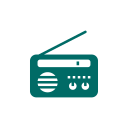Information Ecosystem
Multimedia
Learning Objectives
- Identify common types of multimedia sources and their characteristics.
- Explain when multimedia is a useful source of information and when it is not.
Overview
Multimedia content includes audio, visual, or a combination of formats, as opposed to traditional text-based print sources. They can provide more engaging and accessible ways to learn about a topic.
Like other types of information, multimedia is created by different people and organizations for various purposes. Many blur the lines between education and entertainment. That’s why it’s essential to consider the creator’s intent, expertise, and reputation when evaluating credibility.
In this chapter, we’ll explore common types of multimedia. Keep in mind that categories often overlap and content can be accessed in multiple ways.
Types of Multimedia Sources
Documentaries
Documentaries are nonfiction films that explore specific topics in depth. They may be journalistic, educational, or narrative in style. While they can be informative and compelling, documentaries often reflect their creators’ particular point of view and may include an advocacy message or specific perspective on the topic.
There are many places you can find documentaries, including the library, streaming services, and YouTube.
Example: 20 Days in Mariupol is a Ukrainian documentary produced by PBS Frontline and the Associated Press.
TV Programs (News and Educational)
News and educational programming can be helpful when produced by reputable sources. News shows focus on current events, and educational programs often present information in a documentary-style format.
Example: NOVA is a popular science series that airs on PBS. Episodes focus on a particular topic and usually feature researchers.
Radio Programs
Radio programs can include news, interviews, and storytelling. Interviews with experts or eyewitnesses can be useful for current events or as historical primary sources. Of course, always consider the reliability of the speaker and the outlet. Today, many radio shows are archived online in audio or text formats.
Example: NPR’s All Things Considered is a daily program that includes news, analysis, commentary, and interviews. It’s available both live on the radio and online.
Podcasts
Podcasts are downloadable or streaming audio (and sometimes video) programs. They range widely in quality, reliability, and purpose. Some informative podcasts are created by journalists and experts, while others are amateur productions. Because they are easy to produce and access, podcasts require critical evaluation.
Example: The Wall Street Journal publishes several podcasts with different areas of focus, like short news updates, technology, finance, and opinion.
Online Video Platforms (e.g., YouTube)
YouTube and similar platforms contain vast amounts of user-generated content in addition to professional productions. Educational videos often explain complex ideas with visuals and animations. Like podcasts, it’s easy for anyone to upload content; always assess the credibility of the creator.
Example: Crash Course is an educational YouTube channel that creates series on topics like history and science. A production team reviews content for accuracy.
Finding and Using Multimedia
While many multimedia sources like YouTube videos and podcasts are available for free online, others require paid subscriptions. The library provides access to many documentaries and other videos through databases like Films on Demand, and you can access them for free with your student account.
You might want to use a multimedia source in your research when you’re looking for a more engaging way to learn about a topic or want to see how people are talking about an issue in real life. For example, a documentary or podcast can give you personal stories, expert interviews, or a visual explanation that helps make a complex topic easier to understand. This can be especially helpful if you’re just getting started or if you prefer learning by watching or listening. You may also want to incorporate multimedia in presentations or other creative assignments where visuals or audio might help you explain your ideas more effectively.
Be sure to give credit for any multimedia sources you use, just like you would for books or articles. For more information on citations, see the “Citation Basics” chapter.
Multimedia might be useful to you if…
- You want a general overview or engaging introduction to a topic
- You’re looking for interviews, public reactions, or storytelling
- You like to learn from visual or audio content
Multimedia might be less useful if…
- You need peer-reviewed, in-depth, or highly specific academic research
- Your topic requires detailed scientific data or complex analysis
A Word of Caution: Sponsored Content and Advertising
Many multimedia platforms rely on advertisements or sponsorships for funding. This means that some content may be influenced by commercial interests. For example, a podcast episode might be sponsored by a company that is discussed in the episode, or a YouTuber might be paid for promoting a product in their video. Be cautious of:
- Product placements within videos or episodes
- Sponsorship disclosures
- Content that focuses heavily on a single brand or viewpoint without presenting alternatives
Reflection Questions
- Think about a time you watched or listened to a multimedia source that changed your perspective. What made it persuasive or trustworthy?
- How do you evaluate the credibility of multimedia sources compared to written ones?
- What are some potential benefits and drawbacks of using multimedia in a presentation? When might it enhance your message, and when could it become a distraction?
Attributions
This chapter contains material adapted from Information Sources: Media in Introduction to College Research Copyright © by Walter D. Butler, Aloha Sargent, and Kelsey Smith and is used under a CC BY 4.0 license.

